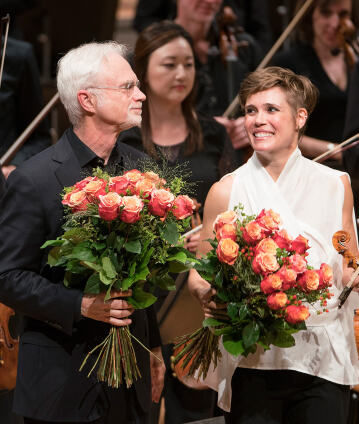Interview
John Adams in conversation with Sarah Willis John Adams dirige John Adams

John Adams compte parmi les principaux représentants du courant minimaliste – même s’il se plaît souvent à en métisser l’esthétique avec un langage musical plus luxuriant, presque post-romantique. Compositeur en résidence des Berliner Philharmoniker pour la saison 2016-2017, Adams fait avec ce concert ses débuts à la tête de l’orchestre. Au programme : sa célèbre Harmonielehre et son concerto pour violon Scheherazade.2 avec Leila Josefowicz en soliste.
Berliner Philharmoniker
John Adams
Leila Josefowicz
© 2016 Berlin Phil Media GmbH
Interviews liées au concert